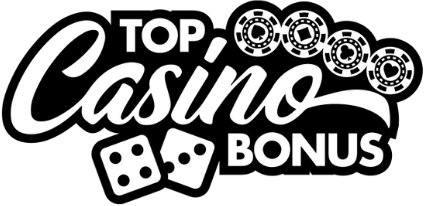Bankroll management strategies for roulette players
Roulette isn’t a pure game of chance, no matter what some fresh-faced punters might believe. Sure, the wheel spins and the ball settles wherever it pleases, but that doesn’t mean you need to toss your chips in like you’re lighting a bonfire. Bankroll management, now that’s the name of the game if you want a fighting chance at surviving the grind. And I do mean grind, because roulette isn’t about quick wins. It’s about sustainability, discipline, and above all, control.
Table of contents
Understanding the core of roulette risk
A lot of rookies fall into the trap of only thinking about the odds of red vs black or straight-up numbers. But the real pitfall lies beneath: they fail to assess the volatility of roulette outcomes against their bankroll size. It’s not just about each bet, it’s about sequences. Runs of reds, clusters of odd numbers, long losing streaks. And if your bankroll can’t stomach those swings, you’re out faster than a candle in a hurricane.
You’ve got to size your bankroll not just for an hour of play but for sessions that could last weeks if you’re serious. For table min bets of $5, you’d better walk in with $300 minimum to ride through variance. And that’s playing conservatively, with flat betting.
Bet sizing is where most fall flat
A lot of players get stars in their eyes and start slapping max bets on columns or dozens, hoping for a quick double-up. That’s fantasy thinking. A wise approach is to never bet more than 2-5% of your total bankroll on a single spin, especially if you’re applying progression strategies like Martingale. Once you’ve crossed into 10% territory per bet, you’re basically building sandcastles waiting for high tide.
Why proper segmentation is crucial
Over the years, this simple concept’s saved more bankrolls than any winning number ever did. You divide your total bankroll into smaller playing units. Most pros I’ve run with break theirs into daily or hourly units, so even if the day goes bad, it doesn’t wipe out the whole stash. You limit damage. You preserve opportunity. That’s how you fight on another day.
Practical bankroll segmentation
Let’s say you’ve got $1000 to play with for the month. Break it into 10 sessions of $100. And then within each session, stick to bets that never exceed $5 or $10, depending on your comfort with risk. You’ll give yourself longevity and the chance to catch a table that swings your way.
And while it’s tempting to raise stakes when you’re up, beware the “house money” illusion. Just because you’re playing with winnings doesn’t mean the risk’s gone. The house doesn’t care whether those chips were profit or principal, it takes them all the same.
Choosing strategies that align with your bankroll
I’ve seen folks bring a knife to a gunfight, trying to use Martingale with a $100 bankroll. That’s suicide by betting progression. You need to choose a roulette strategy that aligns with both your risk tolerance and your capital depth. D’Alembert, Fibonacci, these have their place when used with the right financial cushion and discipline. But using them blind? You’re lobbing grenades into your own pocket.
Progressions aren’t magic wands
Take the Martingale. In theory, it makes perfect sense, double up till you win. But it ignores table limits and human bankrolls. One losing streak and you’re facing a $640 bet just to recoup a handful of $5 wins. If you don’t have the ammo, the plan backfires spectacularly. Why risk total collapse for incremental gains?
Use online roulette software to practice without pressure
These days, you don’t need to burn your cash learning the ropes. Top-tier roulette software platforms let you rehearse, refine, and reinforce bankroll management off the clock. Providers like Playtech offer detailed simulations that mirror real casino mechanics, from wheel bias algorithms to betting history tracking.
Learning through observation and repetition
I always tell newcomers: before you risk a cent, spend 50 spins watching results. Set up your system, run it virtually, and log your results. Software environments from Play’n GO or NYX Gaming Group give you a controlled setting where you can test bet flow, reaction timing, and bankroll response without clouding your judgment with emotions tied to money.
The key? Practice discipline like it’s a muscle, because it is.
Tracking performance and adjusting on the fly
Roulette sessions should be tracked like a trader tracks the market. Record spin results, bet types, outcomes, and the bankroll delta. Because what feels like a good session might hide negative expected value if you’re not honest with your numbers. You’ve got to do postmortems after each session and adjust tactics accordingly. Only then does the wheel start to speak to you.
When to walk away and when to reload
Set loss limits and win goals before a session starts. That isn’t superstition, it’s mental framework. If you hit your 25% stop-loss, cash out. Played well and hit 30% profit? Take the win. Live to spin another day. Discipline crystallizes strategy into long-term success.
Software providers that reward structured play
Some roulette platforms are built better than others for those of us who aren’t just here for a dance with Lady Luck. Novomatic titles in particular have detailed statistical interfaces that reward sharp bankroll monitoring. Combine that with consistent wheel graphics and random number generation, and you’ve got a tool ready for real-world conditioning.
Mastery comes when your tools speak your language, and the best providers build products that respect intelligent strategy.
The real secret: consistency trumps brilliance
People chase magical spins, hot streaks, and hunches. Waste of time. I’ve seen too many down-and-outers rise by sticking to structured bankroll plans, using software to refine their craft, and letting compounding discipline replace wishful thinking. Roulette isn’t won in one evening, it’s beaten across hundreds of well-managed sessions.
You’re not battling the wheel; you’re battling yourself. Beat that, and you’ve already changed the odds.





0 Comments